#edwin e. williams
Text
The Snapshot Century
"These images are from a collection of several thousand snapshots I've been building since the mid 1970s. They range from small round prints from the #1 Kodak, first taken in 1888, to Polaroids from the 1980s, near the end of the snapshot century and just before the beginning of the digital age. - " Rodger Kingston
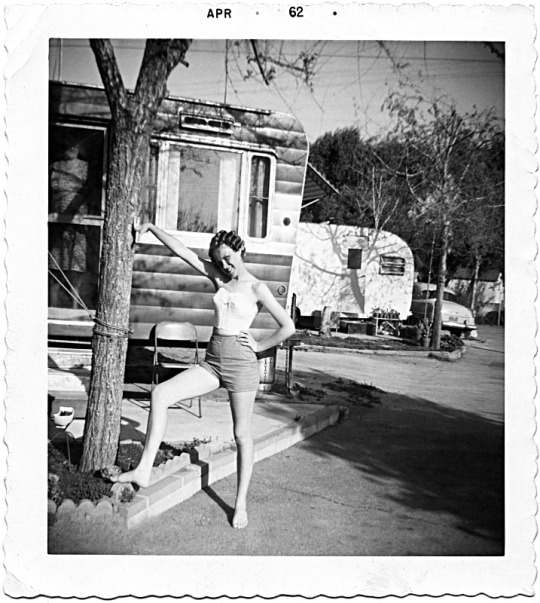
Trailer Park Pin-up Girl, Hair in Curlers, Chattanooga, TN, 1962. Gelatin Silver Print Snapshot.

Tease, c. 1950. Gelatin Silver Print Snapshot.
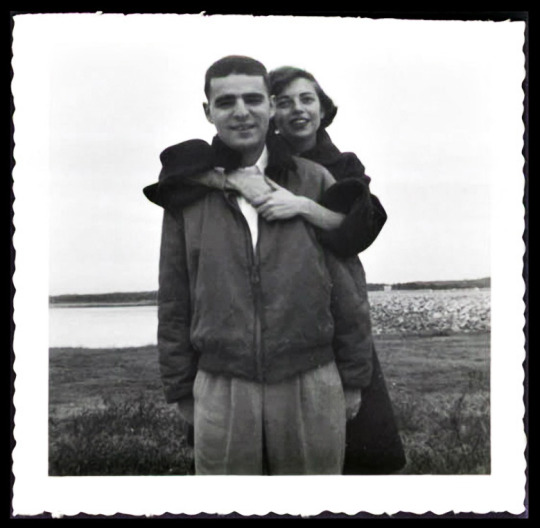
Affectionate Couple, c. 1950s. Gelatin Silver Print Snapshot.

Eddie, c. 1960s. Polaroid Snapshot.

Couple Outside Motel Room, Red Head with Big Hair, c. 1960s. Dye Coupler Print Snapshot.

Very Informal Portrait, c. 1970s. Gelatin Silver Print Snapshot.

A Relaxing Day in the Country, c. 1960s. Gelatin Silver 35mm Contact Print.

A Good Story,1970. Dye Coupler Print Snapshot.

Inquisitive Pig, c. 1950s. Gelatin Silver Print Snapshot.

Edwin E. Williams. One Geisha Photographing Another, Kyoto, Japan, 1973. Polaroid SX70 Print. Hand-labeled and dated in ink on verso: "Kyoto Heian Shrine 13 Nov 73".
From Rodger Kingston's Snapshot Collection.
#rodger kingston#the snapshot century#rpk photos#snapshot#polaroid#photography#historic photographs#vintage photography#edwin e. williams
394 notes
·
View notes
Text
Kentucky Governor DILFs







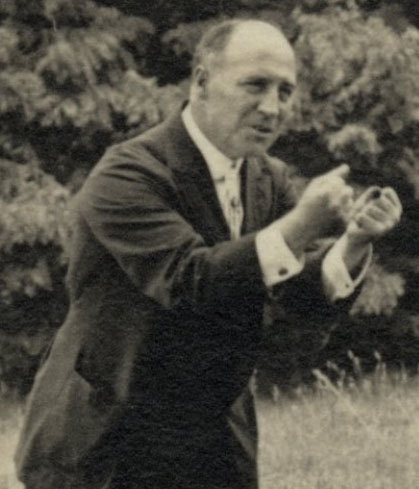


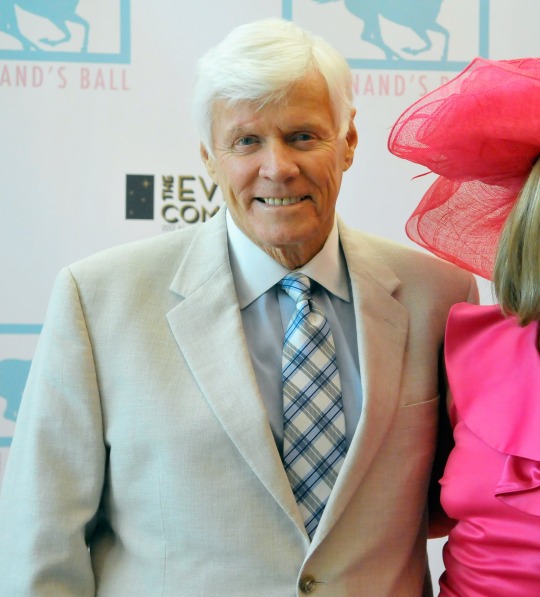

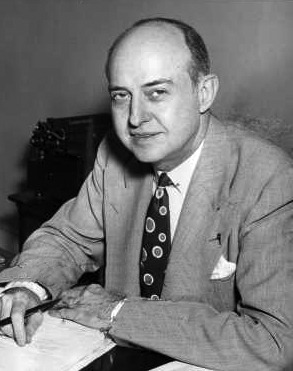
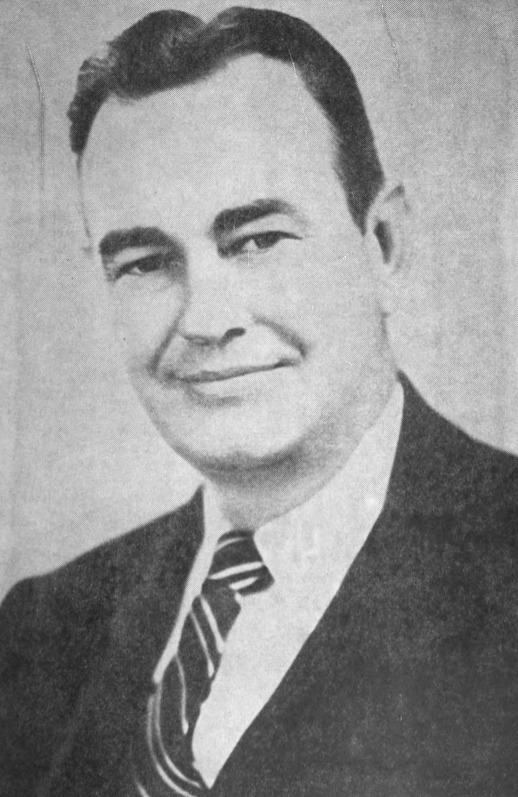


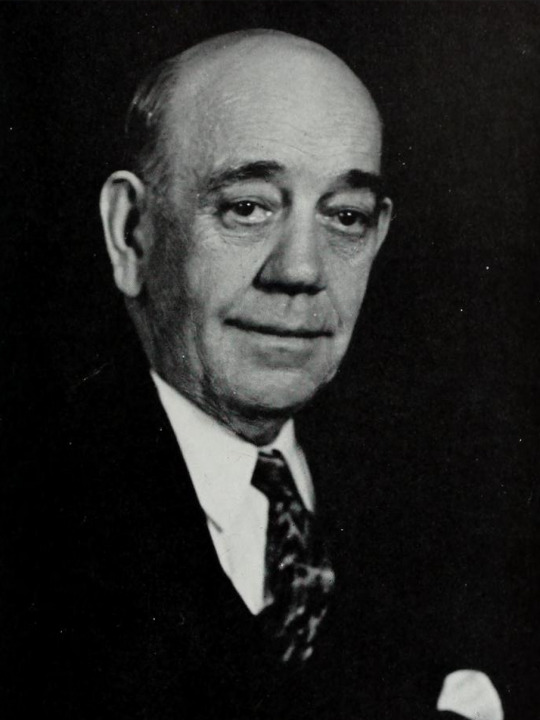





Wendell Ford, Paul E. Patton, Steve Beshear, Julian Carroll, Brereton C. Jones, Matt Bevin, Earle Clements, Edwin P. Morrow, Ernie Fletcher, Flem D. Sampson, John Y. Brown, Happy Chandler, Keen Johnson, Lawrence Wetherby, Louie Nunn, Andy Beshear, Ruby Laffoon, Simeon Willis, Wallace Wilkinson, Ned Breathitt, William J. Fields, Bert Combs
#Wendell Ford#Paul E. Patton#Steve Beshear#Julian Carroll#Brereton C. Jones#Matt Bevin#Earle Clements#Edwin P. Morrow#Ernie Fletcher#Flem D. Sampson#John Y. Brown#Happy Chandler#Keen Johnson#Lawrence Wetherby#Louie Nunn#Andy Beshear#Ruby Laffoon#Simeon Willis#Wallace Wilkinson#Ned Breathitt#William J. Fields#Bert Combs#GovernorDILFs
21 notes
·
View notes
Text
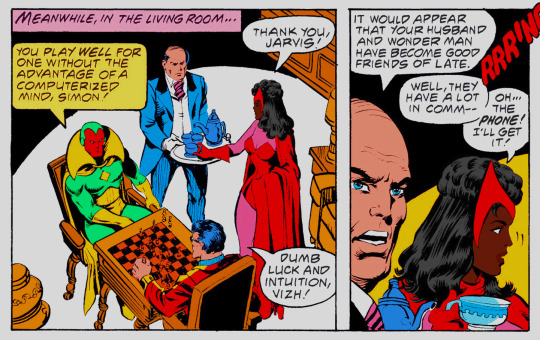
vision and simon play a game of chess! i love it when they are close and amicable! i love it when they are friends! great that this status quo did not change and they are still friends! anyway makes sense simon would be good at chess, it's always been associated with being smart and wealthy to me.
AVENGERS vol 1 #170 (1963) : " ... THOUGH HELL SHOULD BAR THE WAY!" written by jim shooter and drawn by george perez
#t: comic panel#wonder man#simon williams#ft: the vision#ft: wanda maximoff#ft: edwin jarvis#e: 1970#u: 616#q
10 notes
·
View notes
Text

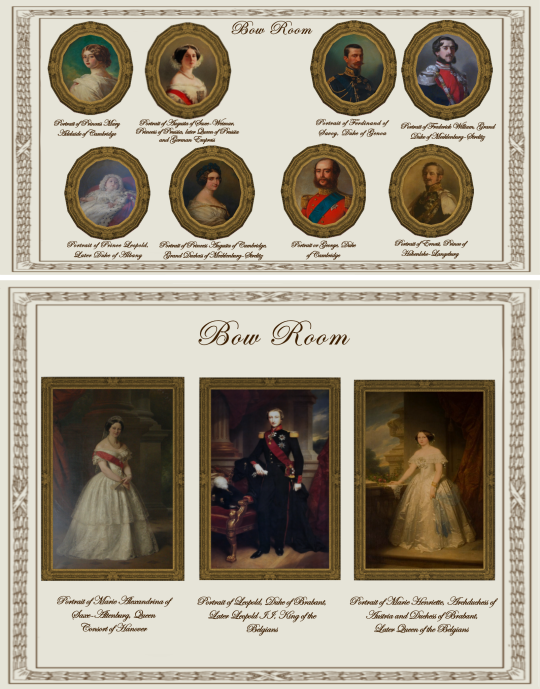
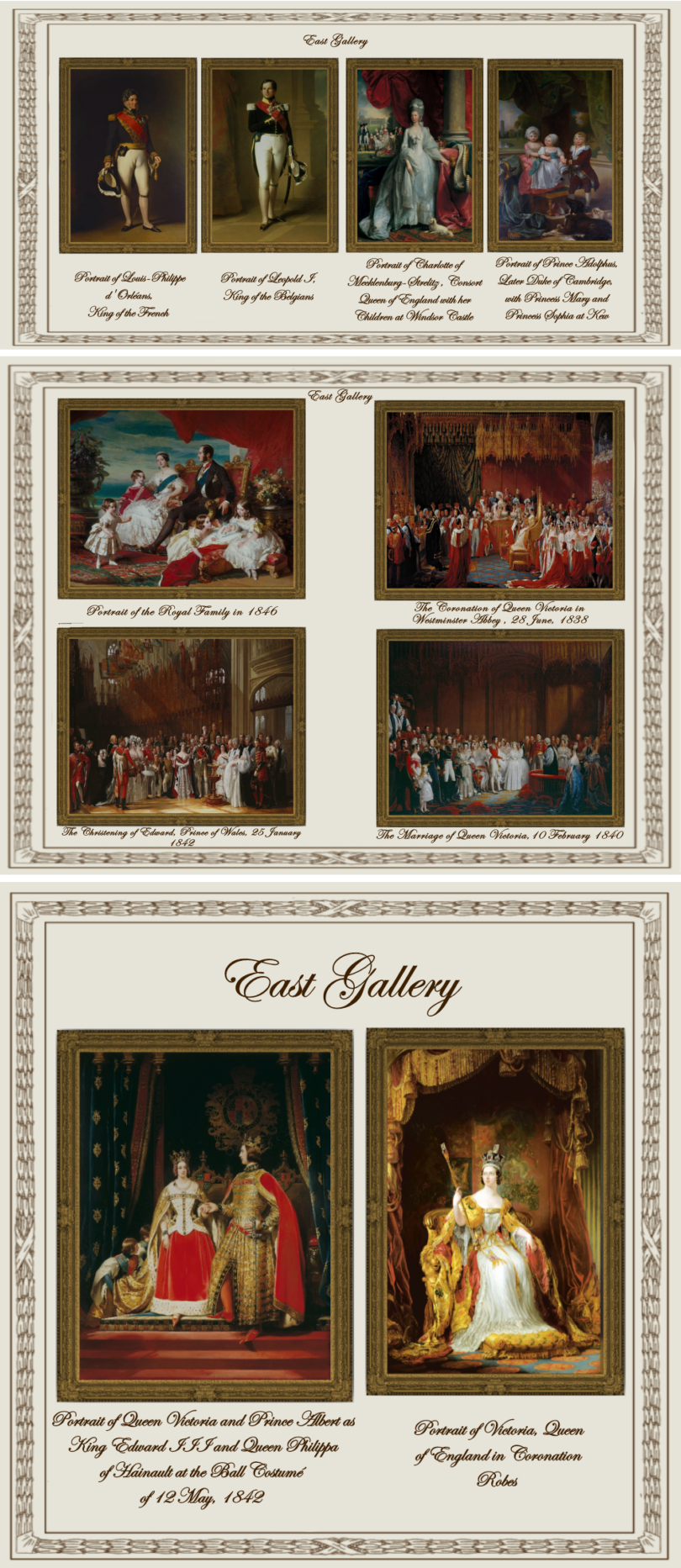
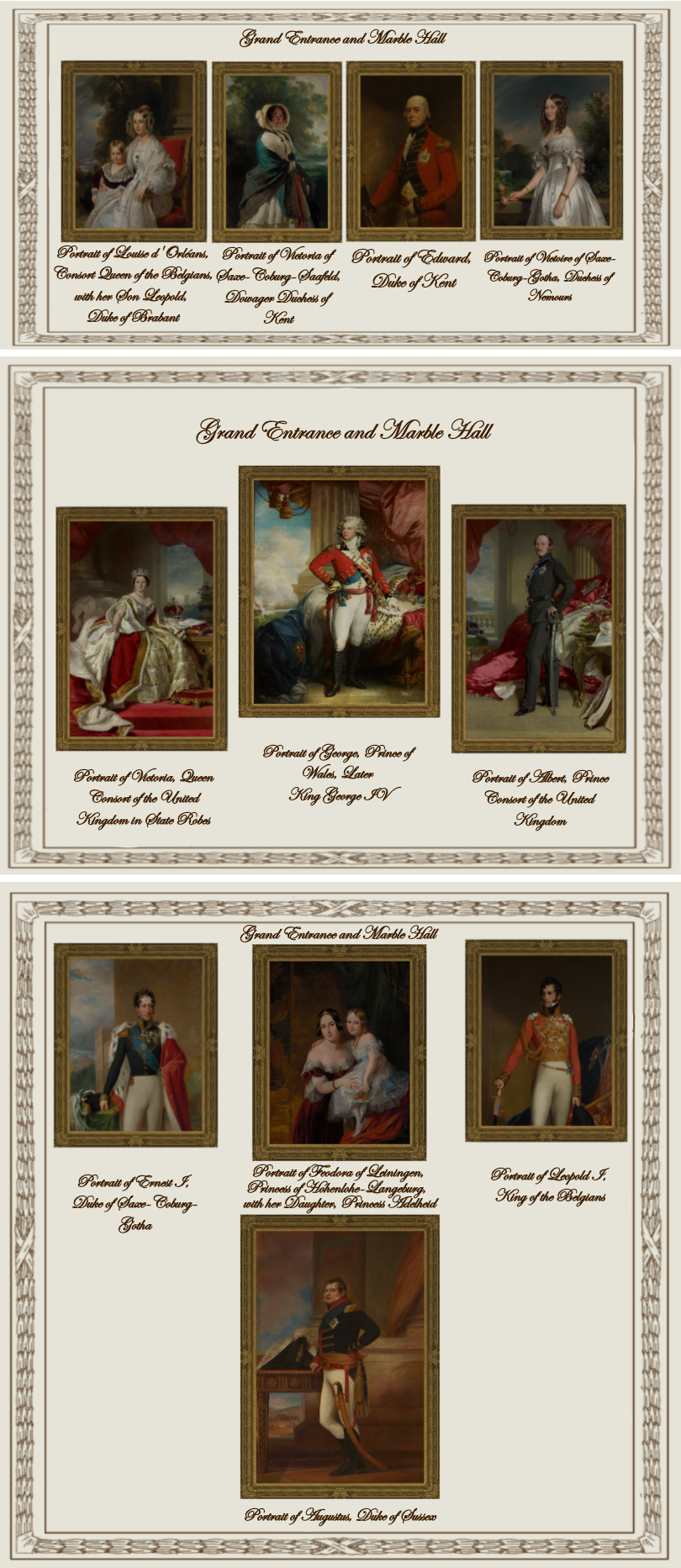

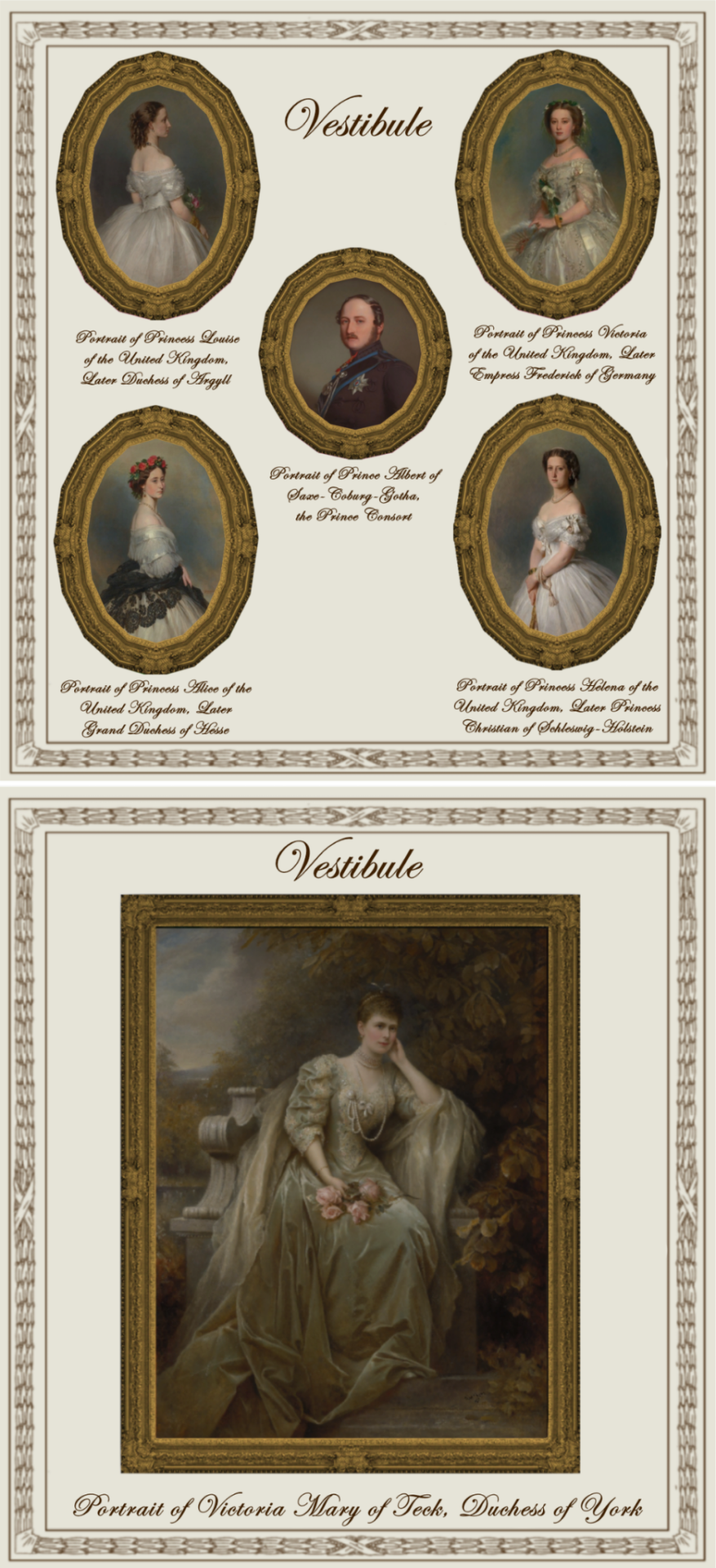


Paintings from Buckingham Palace: part II
A retexture by La Comtesse Zouboff — Original Mesh by @thejim07
Spread among 13 occupied and historic royal residences in the United Kingdom, the collection is owned by King Charles III and overseen by the Royal Collection Trust. The British monarch owns some of the collection in right of the Crown and some as a private individual. It is made up of over one million objects, including 7,000 paintings, over 150,000 works on paper, this including 30,000 watercolours and drawings, and about 450,000 photographs, as well as around 700,000 works of art, including tapestries, furniture, ceramics, textiles, carriages, weapons, armour, jewellery, clocks, musical instruments, tableware, plants, manuscripts, books, and sculptures.
Some of the buildings which house the collection, such as Hampton Court Palace, are open to the public and not lived in by the Royal Family, whilst others, such as Windsor Castle, Kensington Palace and the most remarkable of them, Buckingham Palace are both residences and open to the public.
About 3,000 objects are on loan to museums throughout the world, and many others are lent on a temporary basis to exhibitions.
-------------------------------------------------------
The second part includes paintings displayed in the Ball Supper Room, the Ballroom, the Ballroom Annexe, the Bow Room, the East Gallery, the Grand Entrance and Marble Hall, the Minister's Landing & Staircase, the Vestibule, the Chinese Dining Room and the Balcony Room.
This set contains 57 paintings and tapestries with the original frame swatches, fully recolourable. They are:
Ball Supper Room (BSR):
Portrait of King George III of the United Kingdom (Benjamin West)
Ballroom (BR):
The Story of Jason: The Battle of the Soldiers born of The Serpent's Teeth (the Gobelins)
The Story of Jason: Medea Departs for Athens after Setting Fire to Corinth (the Gobelins)
Ballroom Annexe (BAX):
The Apotheosis of Prince Octavius (Benjamin West)
Bow Room (BWR):
Portrait of Princess Mary Adelaide of Cambridge (William Corden the Younger)
Portrait of Princess Augusta of Cambridge, Grand Duchess of Mecklenburg-Strelitz (Alexander Melville)
Portrait or George, Duke of Cambridge (William Corden the Younger)
Portrait of Frederick William, Grand Duke of Mecklenburg-Strelitz (Franz Xaver Winterhalter)
Portrait of Augusta of Saxe-Weimar, Princess of Prussia, later Queen of Prussia and German Empress (Franz Xaver Winterhalter)
Portrait of Prince Leopold, Later Duke of Albany (Franz Xaver Winterhalter)
Portrait of Ernest, Prince of Hohenlohe-Langeburg (Franz Xaver Winterhalter)
Portrait of Ferdinand of Savoy, Duke of Genoa (Eliseo Sala)
Portrait of Marie Alexandrina of Saxe-Altenburg, Queen Consort of Hanover (Carl Ferdinand Sohn)
Portrait of Leopold, Duke of Brabant, Later Leopold II, King of the Belgians (Nicaise de Keyser)
Portrait of Marie Henriette, Archduchess of Austria and Duchess of Brabant, Later Queen of the Belgians (Nicaise de Keyser)
East Gallery (EG):
Portrait of Leopold I, King of the Belgians (Franz Xaver Winterhalter)
Portrait of Victoria, Queen of England in Coronation Robes (Sir George Hayter)
Portrait of Louis-Philippe d'Orléans, King of the French (Franz Xaver Winterhalter)
Portrait of Charlotte of Mecklenburg-Strelitz, Consort Queen of England with her Children at Windsor Castle (Benjamin West)
Portrait of Prince Adolphus, later Duke of Cambridge, With Princess Mary and Princess Sophia at Kew (Benjamin West)
The Coronation of Queen Victoria in Westminster Abbey, 28 June, 1838. (Sir George Hayter)
The Christening of Edward, Prince of Wales 25 January, 1842 (Sir George Hayter)
The Marriage of Queen Victoria, 10 February, 1840 (Sir George Hayter)
Portrait of the Royal Family in 1846 (Franz Xaver Winterhalter)
Portrait of Queen Victoria and Prince Albert as King Edward III and Queen Philippa of Hainault at the Ball Costumé of 12 May, 1842 (Sir Edwin Landseer)
Grand Entrance and Marble Hall (GEMH):
Portrait of Edward, Duke of Kent (John Hoppner)
Portrait of Ernest I, Duke of Saxe-Coburg-Gotha (George Dawe)
Portrait of Victoria of Saxe-Coburg-Saafeld, Dowager Duchess of Kent (Franz Xaver Winterhalter)
Portrait of Albert, Prince Consort of the United Kingdom (Franz Xaver Winterhalter)
Portrait of Victoria, Queen Consort of the United Kingdom in State Robes (Franz Xaver Winterhalter)
Portrait of Louise d'Orléans, Consort Queen of the Belgians, with her Son Leopold, Duke of Brabant (Franz Xaver Winterhalter)
Portrait of Feodora of Leiningen, Princess of Hohenlohe-Langeburg, with her Daughter, Princess Adelheid (Sir George Hayter)
Portrait of George, Prince of Wales, Later King George IV (Mather Byles Brown)
Portrait of Victoire of Saxe-Coburg-Gotha, Duchess of Nemours (Franz Xaver Winterhalter)
Portrait of Augustus, Duke of Sussex (Domenico Pellegrini)
Portrait of Leopold I, King of the Belgians (William Corden the Younger)
Minister's Landing and Staircase (MLS):
Portrait of George, Prince of Wales in Garther Robes (John Hoppner)
The Loves of the Gods: The Rape of Europa (the Gobelins)
The Loves of the Gods: The Rape of Proserpine (The Gobelins)
Vestibule (VL):
Portrait of Prince Albert of Saxe-Coburg-Gotha, the Prince Consort (Unknown Artist from the German School)
Portrait of Princess Alice of the United Kingdom, Later Grand Duchess of Hesse (Franz Xaver Winterhalter)
Portrait of Princess Helena of the United Kingdom, Later Princess Christian of Schleswig-Holstein (Franz Xaver Winterhalter)
Portrait of Princess Louise of the United Kingdom, Later Duchess of Argyll (Franz Xaver Winterhalter)
Portrait of Princess Victoria of the United Kingdom, Later Empress Frederick of Germany (Franz Xaver Winterhalter)
Portrait of Victoria Mary of Teck, Duchess of York (Edward Hughes)
Chinese Dining Room or Pavilion Breakfast Room(CDR):
Set of Four Painted Chinoiserie Wall panels I (Robert Jones)
Set of Four Painted Chinoiserie Wall panels II (Robert Jones)
Set of Four Painted Chinoiserie Wall panels III (Robert Jones)
Set of Four Painted Chinoiserie Wall panels IV (Robert Jones)
Balcony Room or Centre Room (BR):
Chinoiserie Painted Panel I (Robert Jones)
Chinoiserie Painted Panel II (Robert Jones)
Chinoiserie Painted Panel III (Robert Jones)
Chinoiserie Painted Panel IV (Robert Jones)
EXTRAS! (E):
I decided to add the rest of the tapestries from the story of Jason (wich hangs in the Grand Reception Room at Windsor Castle) and (with Jim's permission) added the original mesh for paintings number 2,3,4 & 5 from the Vestibule (seen here and here) wich was never published. These items are:
The Story of Jason: Jason Pledges his Faith to Medea (the Gobelins)
The Story of Jason: Jason Marries Glauce, Daughter of Creon, King of Thebes (the Gobelins)
The Story of Jason: The Capture of the Golden Fleece (the Gobelins)
The Story of Jason: The Poisoning of Glauce and Creon by Medea's Magic Robe (the Gobelins)
Sea Melodies (Herbert James Draper) (made by TheJim07)
-------------------------------------------------------
Found under decor > paintings for:
500§ (BWR: 1,2,3,4,5,6, & 8 |VL: 1)
570§ (VL: 2,3,4 & 5 |E: 5)
1850§ (GEMH: 1 & 3)
2090§ (GEMH: 2,6,7, 9 & 11)
3560§ (GEMH: 4,5 & 10 |BSR: 1 |EG: 1,2,3,4 & 5 |MLS: 1 |BAX: 1)
3900§ (CDR: 1,2,3 & 4 |BR: 1,2,3 & 4 |EG: 10 |VL: 6 |GEMH: 8)
4470§ (MLS: 2 |E: 1)
6520§ (BR 1 & 2| MLS: 3 |EG: 6,7,8 & 9 |BR: 1 & 2 |E: 2,3 & 4)
Retextured from:
"Saint Mary Magdalene" (BWR: 1,2,3,4,5,6, & 8 |VL: 1) found here.
"Sea Melodies" (VL: 2,3,4 & 5 |E: 5)
"The virgin of the Rosary" (GEMH: 1 & 3) found here.
"Length Portrait of Mrs.D" (GEMH: 4,5 & 10 |BSR: 1 |EG: 1,2,3,4 & 5 |MLS: 1 |BAX: 1) found here
"Portrait of Maria Theresa of Austria and her Son, le Grand Dauphin" (CDR: 1,2,3 & 4 |BR: 1,2,3 & 4 |EG: 10 |VL: 6 |GEMH: 8) found here
"Sacrifice to Jupiter" (MLS: 2 |E: 1) found here
"Vulcan's Forge" (BR 1 & 2| MLS: 3 |EG: 6,7,8 & 9 |BR: 1 & 2 |E: 2,3 & 4) found here
(you can just search for "Buckingham Palace" using the catalog search mod to find the entire set much easier!)
Disclaimer!
Some paintings in the previews look blurry but in the game they're very high definition, it's just because I had to add multiple preview pictures in one picture to be able to upload them all! Also sizes shown in previews are not accurate to the objects' actual sizes in most cases.

Drive
(Sims3pack | Package)
(Useful tags below)
@joojconverts @ts3history @ts3historicalccfinds @deniisu-sims @katsujiiccfinds @gifappels-stuff
-------------------------------------------------------
#the sims 3#ts3#sims 3#s3cc#sims 3 cc#sims 3 download#sims 3 decor#edwardian#victorian#regency#georgian#buckingham#buckingham palace#wall decor#sims 3 free cc#large pack#this was exhausting
48 notes
·
View notes
Text
🦋URL SONG TAG🦋
Got tagged by @f1shart ! Thank you, and sorry it took a while to get to this lmao! Imma do both my URLs...
L - Livin' on the Edge • Aerosmith
I - I Come With Knives • IAMX
S - Silver Lining • Hurts
S - Slipping • Dr. Horrible
P - Paranoid Android • Radiohead
E - Extreme Ways • Moby
E - Exogenesis Symphony • Muse
D - Dangerous Game • Jekyll & Hyde
J - Juliet's Dream • Abel Korzeniowski | Romeo & Juliet
U - Undertale Yellow • Undertale Yellow
S - Sundial • Lemon Demon
T - The Dark Side [Alternate Reality Version] • Muse
O - Ordinary World • Duran Duran
R - Remedy • Undertale Yellow
N - November Rain • Guns N' Roses
S - Smalltown Boy • Bronski Beat
T - The Spirit of the West • Roy Edwin Williams
E - Ejale • The Sims 2
I - Insomnia • IAMX
N - November • Max Richter
I'm tagging:
@kamiiri @huecycles @scrawnytreedemon @thesimquarter @thesims2comics @eilyca @creamecream @sprout-tower @devilrose
11 notes
·
View notes
Note
hello fahye!!!
i’ve recently become rather obsessed with the last binding like i’ve been telling everyone i know to read it (i like to think i’m your number 1 promoter atm) i just love your series so much and i think it deserves all the praise in the world because it just encompasses queer joy and is exactly what i’ve been looking for in a book trilogy for the longest time
I just was curious about 2 things:
1. is the scene where mrs navenby possesses maud in a restless truth inspired by the scene in good omens where aziraphale possesses madame tracy because it reminded me a lot of that scene when i was reading it
2. if you can remember i’m very curious as to the exact william morris works featured in a marvellous light because i love that you included all the little references to art they make my little art historian brain feel very happy (i feel like you’d be happy to know that since reading a marvellous light i found myself a little william morris zip up pouch that i carry my e-reader around in)
anyway thank you sm i absolutely adore your books and i cannot wait to read a power unbound i don’t know how i’m gonna survive until november 😭
hello! thank you!
I won't say that it was a direct and deliberate homage, but certainly that scene is one of the main references in my mental lexicon when I think about a semi-cooperative possession of one being by another. good omens was such a favourite of mine for such a long time; I'm sure its fingers of influence are all through the things I write!
oh gosh. it's been some time but I think these are the main ones described or referenced:



maud's room in penhallick has strawberry thief wallpaper, and edwin and robin stay in rooms papered in the willow-bough design. I think the blackthorn design is the one I described for the main parlour; if not, it was one very similar, because I remember the small white flowers.
38 notes
·
View notes
Note
I remember looking through the Evan name origin and I noticed something that hasn't left my mind.
Evan came from "E V A ... D" in the logbook, right? That backwards is "Dave", like David. David is Edwin's son, right?
I theorize that the MIMIC story parallels the Aftons' lore, even though it's basically canon that these two families are different. The way the story is summarized basically gives Edwin the same willpower as William did, despite the Mimic having already been active. Just something I noticed.
Had to get my thoughts out there, sorry.
cool theory!!
#pandas.txt#pandas asks#theory#dont really have any thoughts myself but wanted to share your theory anyway =)
11 notes
·
View notes
Text
13 Curious Legal Cases From Cincinnati's Historic Courtrooms
When the Cincinnati Bar Association was first organized in 1819, our city of 10,000 citizens supported the livelihoods of just 27 attorneys. Since then, the Cincinnati legal community produced some stellar lawyers including Chief Justice William Howard Taft, Nobel Peace Prize laureate Charles Dawes and Speaker of the House “Uncle Joe” Cannon. Over the years, our barristers have represented some curious cases. Here are a few:
Testy “Ass”-ociates
Way back in Cincinnati legal history, at the ancient Hamilton County Court House erected in 1819, a lawyer named James W. Gazlay argued a motion before the court. The county bench back then comprised a presiding judge who was usually an actual attorney and three associate judges who were often not lawyers but respected members of the community. When the presiding judge ruled in favor of Gazlay’s motion and the associates voted it down, Gazlay objected. The court agreed to reconsider the motion the next day, and Gazlay showed up, ready to argue. This time, the associates favored Gazlay’s motion, but the presiding judge over-ruled them. Attorney Gazlay expressed his frustration at having to argue before a “Demerara Team.” The presiding judge asked what that meant. “This court is a Demerara Team composed of one mule and three jackasses; when the mule wants to go, the jackasses won't, and when the jackasses want to move, the mule won't budge a step!” The presiding judge found Gazlay in contempt but, true to their nature, the “ass”-ociates voted against the censure.
Spelling Leads To A Spell In Jail
Attorney Edwin S. Morrissey was assigned to defend a young man accused of obtaining money under false pretenses. The principal evidence was a receipt given to the complaining witnesses in the case. Morrissey’s client provided a reasonable alibi, but the prosecution asked him to provide a writing sample to compare against the receipt in evidence. The suspect produced a sample in handwriting totally unlike the original receipt, but the prosecution noticed that the word “received” was misspelled identically on both documents, transposing the I and the E. The defendant was found guilty. He confessed to Morrissey that he had, in fact, forged the receipt. “He said that if he had a better education he could have put it over.”

Stamped For Blackmail
While he served as Assistant United States Attorney in Cincinnati, Edward P. Moulinier investigated an attempt to blackmail a lawyer named Howard Douglass, who had received a dozen letters threatening to expose unsavory aspects of his legal work. The blackmailer ordered Douglass to pay $7,000. Moulinier suspected an inside job and had a postal inspector apply a barely noticeable mark to the stamps in Douglass’ office. Sure enough, the next threatening letter arrived bearing a marked stamp. Fred Horman, who had worked as a clerk in the Douglass office for 25 years, and Horman’s wife were arrested and convicted of blackmail. No record if they were charged with embezzling stamps.
How Much Moon In That Shine?
One day during Prohibition, some Ohio liquor agents found a stash of bottles containing a clear liquid, presumed to be moonshine, in an abandoned building in downtown Cincinnati. As a crowd gathered to watch the contraband hauled out of the cellar, the agents realized they had evidence, but no culprit. They decided that a passing peddler who had paused his horse-drawn cart long enough to witness the raid was as good as any, so they charged him. Attorney Bernard C. Fox was assigned to defend the poor man and quickly realized that not one of the bottles found in the abandoned building had even been opened to determine its contents. Fox grilled the agents on the witness stand as to their ability to identify moonshine on sight alone. How much moon, he asked, is incorporated into moonshine? The agents were clearly befuddled. Well then, he asked, how much shine is necessary to constitute moonshine? Again befuddlement. Fox was shocked when the judge found the innocent peddler guilty anyway and only an appeal to a higher court cleared him.

A Wedding Guest Helped Hang The Groom
In 1879, the National Association for the Promotion of Marriage concocted a “marriage picnic” at Cincinnati’s Inwood Park to encourage destitute young ladies to marry and avoid a life of shame. The whole idea, according to attorney Rufus B. Smith, was the brainchild of a mayor “who had more emotion and sentiment than common sense.” Because he lived in the neighborhood, Smith attended the picnic and watched three couples share their vows. A few years later, as Assistant Prosecuting Attorney, Smith was involved in convicting one of the grooms for the murder of his wife. “I think there are very few lawyers who have been guests at a wedding, as I was, and subsequently found it their duty to hang the groom for killing the bride.”
No Room In The Pen
Captain Thomas H. Morrow, as U.S. District Attorney for Southern Ohio, handled a poison pen case involving one of the smaller towns in this area. More than 40 residents reported that they had received letters containing vulgar and obscene language and unfounded accusations against the recipients. An otherwise unassuming woman of 57 years of age was found guilty of the crime and sentenced to three years in the penitentiary, but which one? There were no federal penitentiaries for women in 1923. Southern Ohio had contracted with the State Penitentiary for Women in Missouri, but that contract had expired and Missouri was unwilling to renegotiate. The convict was actually delivered to the Minnesota Penitentiary for Women but was turned away at the door. She was then sent to the New Jersey Penitentiary for Women, where she was again refused until some hasty and heated negotiations by telephone secured her a three-year stint in that institution.
The Pocketed Deposition
Isaac M. Jordan enjoyed a distinguished reputation among Cincinnati attorneys and once found himself in court, arguing a case against an attorney with a very much different character. Although Jordan had secured a deposition very much in his client’s favor, that document had mysteriously disappeared. Jordan’s counterpart vociferously regretted the loss of the deposition because, so he claimed, it would really have benefitted his client rather than Jordan’s. As the other lawyer expostulated, Jordan noticed, hanging from his pocket, the corner of a piece of paper. Jordan grabbed it as the shyster passed nearby and, amazingly, it was the “lost” deposition. The courtroom erupted in cheers, involving even the jury, who returned a verdict in favor of Jordan’s client.
The Difference Of Night And Day
In the days before Hamilton County established a public defender office, the courts regularly drafted lawyers to defend the accused. Attorney Albert D. Alcorn was thus recruited to assist a man charged with burglary. Although otherwise entirely involved with civil cases, Alcorn emerged triumphant in this case. On reading the statutes, he saw that burglary was defined as illegally entering a house “in the night season.” While in court, Alcorn dialed the U.S. Weather Bureau and determined that sunrise on the day of his client’s arrest was at 4:56 a.m. while the arresting officers had testified they witnessed his client enter the house in question at 6:20 a.m., an hour and a half later. The accused burglar was released on that technicality, much to the displeasure of the judge, who began to chastise him. The now legally innocent man stopped the judge mid-sentence and declared, “You can’t tell me anything. The jury has said I am not guilty, and I don’t care to listen to you or anybody else lecture me. I bid you all good-by.”

A Premature Burial
The legal intricacies of deeds and land titles rarely excite much public interest, but attorney Dudley C. Outcault had a doozy. Outcault was retained by a prominent Cincinnati developer who wanted to acquire a prime piece of real estate in O’Bryonville. The land was owned by a man whom no one in Cincinnati had seen for many years. He was presumed to be dead and negotiations were underway to determine which of his heirs were the rightful beneficiaries of the property in question. As the gears of legal machinery ground on, a substantial wrinkle emerged. The “dead” man returned to Cincinnati, in remarkably fine fettle, apologizing for not writing as he had made his 15-year jaunt around the country. He informed the court he had no intention to sell the land coveted by the developer, much to his relatives’ dismay.
The Pot Calls The Kettle Black
During Prohibition, it was common for small Ohio municipalities to establish Liquor Courts to enforce the “dry” laws. Attorney Harry H. Shafer wrangled with many of these courts and eventually pursued a case to the United States Supreme Court to essentially outlaw them. Shafer was hired by a man who had been an agent for one of these liquor courts and had been fired, he believed, unjustly. Not only had the man been fired, but he had been charged with possessing and selling spiritous liquor. On investigation, Shafer was able to prove that the firing and the subsequent charges grew out of a disagreement between his client and his accusers, who were all liquor agents. Shafer was able to prove that the whole lot of them were involved in reselling the booze they had confiscated in their official capacities.
A Self-Fulfilling Prophecy
Attorney William Thorndyke knew very well that he could not ethically advise a client to avoid appearing in court, but there was no ethical prohibition against prophecy. The client in question, named Francis, was charged with arson and the Fire Marshal wanted to know where Francis had lived before he moved to Cincinnati. Francis refused to tell and explained to Thorndyke that he had been convicted of setting two fires in that town, which the Fire Marshal would learn by telegram if he knew where to inquire. Francis asked the attorney if he should run away and Thorndyke told him he could not offer that advice but, if he stayed in Cincinnati, he would surely end up in the penitentiary. On the day of the trial, the accused was nowhere to be found and the judge asked Thorndyke if he had advised his client to disappear. “I didn’t tell Francis to run away,” Thorndyke said, “But I did tell him what would happen to him if he stayed in Cincinnati.” It took a few months to locate Francis and return him for trial, and he did end up in the pen, just as his attorney predicted.
Ain’t No Law Against It
Cincinnati Police arrested a young woman in 1916 and hauled her into court on charges she had been clothed as a man. Forced into a dress for her arraignment, she refused to enter the courtroom until she had been draped in a floor-length overcoat. Attorney Harry W. Quitman was assigned to the case and secured a dismissal by pointing out a particularly salient fact: There was no law in Ohio prohibiting women from wearing clothing associated with men. “The law especially defends women in their right to wear any clothing they see fit if the women do so in an innocent and not objectionable manner.” Quitman’s client walked free although she was harassed enough to leave Cincinnati for Columbus, where she was arrested – and acquitted – again.
Leave Well Enough Alone
Haveth E. Mau was an Assistant District Attorney who, at one point in his long career, prosecuted a man for burglary of an occupied house and the theft of a number of articles. Under Ohio law at the time, burglary of an occupied house carried a penalty of life in prison. The jury, after consideration, found the defendant guilty only of petit larceny. Attorney Mau was shocked to learn that the man was unsatisfied with this misdemeanor verdict and wanted a new trial to contest it. A new trial was set and the same evidence presented. This time, the jury found the man guilty of burglary of an occupied residence and the judge sentenced him to life in prison. Mau was still shaking his head years later.
9 notes
·
View notes
Photo

Corinne Griffith and Victor Varconi in The Divine Lady (Frank Lloyd, 1929)
Cast: Corinne Griffith, Victor Varconi, H.B. Warner, Ian Keith, Marie Dressler, Montagu Love, William Conklin, Dorothy Cumming. Screenplay: Forrest Halsey, titles by Harry Carr and Edwin Justus Mayer, based on a story by E. Barrington. Cinematography: John F. Seitz. Art direction: Horace Jackson. Film editing: Hugh Bennett. Music: Cecil Copping.
Frank Lloyd is a director nobody remembers today except for the fact that he won two best director Oscars. Unfortunately, they were for movies that almost no one except film scholars and Oscar completists watch today: this one and Cavalcade (1933). His other distinction is that his Oscar for The Divine Lady is the only one that has ever been awarded for a film that was not nominated for best picture.* It's a moderately entertaining film about the affair of Emma Hamilton (Corinne Griffith) and Lord Horatio Nelson (Victor Varconi) -- a story better told in That Hamilton Woman (Alexander Korda, 1941) with Vivien Leigh and Laurence Olivier as the lovers. Griffith is one of those silent stars whose career didn't make it into the sound era, reportedly because her voice was too nasal. She was, however, considered* for the best actress Oscar, which went to Mary Pickford for Coquette. She doesn't have to speak in The Divine Lady: Although it has a synchronized music track, including Griffith supposedly singing (but probably dubbed) "Loch Lomond", and sound effects, including cannon fire during Nelson's naval battles, there is no spoken dialogue. The only truly standout performance is a small one by Marie Dressler as Emma's mother: She has a funny slapstick bit at the beginning of the movie, but disappears from the movie far too soon. The cinematography by John F. Seitz (miscredited as "John B. Sietz" in the opening titles) was also considered* for an Oscar, but it went to Clyde De Vinna for White Shadows in the South Seas (W.S. Van Dyke and Robert J. Flaherty, 1928).
*If you want to get technical about it, there were no official nominations in any of the Oscar categories for the 1928-29 awards. What are usually regarded as nominees are the artists and films that Academy records show were under consideration for awards. In Lloyd's case, he was also under consideration for directing the films Drag and Weary River during the same time period, but when his win was announced, only The Divine Lady was specified.
3 notes
·
View notes
Text
Saturday 15 July 1837
8 10
12 5
very fine morning F68° and breakfast at 9 10 and sat talking to A- till 10 – rainy morning – from about 10 or soon after – made out what John Booth had to pay – sundry bills – in and out with Mr. Gray – had had T. Greenwood Northowram blacksmith for Stump X Inn, and paid him his little bill – with Mr. G- planning new front home entrance laundry court etc – Robert Mann and co. had gone away this morning at ¼ time in consequence of the rain – back this afternoon – a minute or 2 with them getting up and planting bore when Mawson came – paid him for meer jobbing (ornament under Mr. gray and of last month and beginning of this) and for Stump X Inn carting stones etc had just settled all this at 2 20 when Booth the mason came – and gave him a check no.146 in a/c and gave orders about the work – what men to be here and at the pen-trough – and what to be gone on with immediately – consented to let him let Little marsh for fear that he and had seen to do unfairly to take the job himself after getting estimates – Parkinsons’ estimate the lowest and I would rather he had the job than any of the rest if he can do it well and in time – while the old house (at Little marsh) is taken down i.e. during next week P- might help us here – begin the top terrace walling – that is after Monday next when the great stone will be set at the pen-trough the 2 masons Robert Sharpe and Amos Ambler and Stephen Mallinson cannot do the hay-barn-roof for less than 6/6 per square = about 20 squares = £6.10.0 and the sawing = about £2
the labourer William Green and another labourer (to be hired) might be enough Reveals of windows Edward Waddington Rigging stones Joseph booth Robert Wharton and the led Edwin Booth
Laundry James Sharpe John ditto
Booth would not like to let the finishing of the hay barn – 2 wallers and lads another week would finish it – what remains is worth 1/. per rood less than the other part – then had Stephen Schofield blacksmith and paid him 4 bills for Shibden hall and Hilltop gates etc. and the gardeners’ account and Hipperholme quarry account and a little bill 1/3 for 5 horse shoe removes – then
SH:7/ML/E/20/0093
till 4 25 wrote all but the 1st six lines of today – out – with Robert Mann + 3 (Sam, Jack, and Michael) John – and Robert’s son James gone to hear Mr. Wortley speak at the piece hall – 2 or 3 showers – took shelter and then again at the box getting up and planting till 6 or after when the men went away – then out with Mr. Gray planning about the terraces, till came in at 6 55 – dressed – ready at 7 10 – Mr. Jubb here –says Hannah may go anytime – to go therefore on Friday next – Mr. J- staid till 7 ½ at which hour dinner – A- sickish and left the table just before dessert came – I went upstairs with her for a few minutes – then down again for 10 minutes or ¼ hour – A- had Mr. Washington’s man Berry who brought her some rents and me part of my cottage rents = £11.13.0 –
John Druniston 6.6.0
John Oates 1.17.6 not paid
James Greenwood 17
Jonathan Taylor 18.0
Thomas Longbottom 3.12.0
Staups 11.13.0
with Mr. Gray planning how to do up the red room i.e. my aunt’s room – with A- ¼ hour till 10 ½ - she had had note tonight from Mr. Adam acknowledging the receipt of the 2/6 due to the trustees of Mr. Wadsworth and saying so many voters declined giving any answer it would be impossible to know the result of the election till it was over – wrote so far of this page till 11 55 – rainy morning – showery afternoon – thunder and lightning 2 or 3 times during the day – F54° at 10 ½ pm – A- had parcel tonight from Whitley’s containing note from Miss Rawson and book for little Mary (‘Evenings at home’)
5 notes
·
View notes
Text
POETRY LIST FROM BRIAN P: This list is made up of English language “lyric” poems by poets from what would become or is now the United States of America. They are in a random arrangement, not alphabetical or chronological. Allow them to play off each other in a variety of ways. Each poet is represented by only one poem.
May Swenson, The Centaur
Archibald MacLeish, Ars Poetica
Oliver Wendell Holmes, The Chambered Nautilus
Lucille Clifton, The Lost Baby Poem
Hart Crane, Voyages
H.D. Elegy and Choros
Wallace Stevens, Thirteen Ways of Looking at a Blackbird
Amy Lowell, The Garden by Moonlight
N. Scott Momaday, The Delight Song of Tsoai-talee
Francis Scott Key, Defense of Fort M’Henry
Langston Hughes, The Negro Speaks of Rivers
Adrienne Rich, Diving into the Wreck
Robert Hayden, Letter from Phyllis Wheatley
Bob Dylan, The Times They Are A-Changin’
James Dickey, Cherrylog Road
Chen Chen, I Invite My Parents to a Dinner Party
Joy Harjo, She Had Some Horses
Bonnie Larson Staiger, Grassland
Robert Frost, Stopping by Woods on a Snowy Evening
e.e. cummings, “anyone lived in a pretty how town”
Carl Sandburg, Chicago
James Russell Lowell, The Present Crisis
Ralph Waldo Emerson, The Snowstorm
Robert Lowell, For the Union Dead
Tommy Pico, I See the Fire that Burns Inside You
Emily Dickinson, “I started early – took my dog””
T.S. Eliot, The Hollow Men
Louise Gluck, The Wild Iris
Anonymous, Swing Low, Sweet Chariot
Gary Snyder, The Bath
Gwendolyn Brooks, We Real Cool
James Whitcomb Riley, L’il Orphant Annie
James Merrill, The Victor Dog
James Welch, Harlem, Montana: Just Off the Reservation
Frank O’Hara, Why I Am Not a Painter
John Ashbery, Self-Portrait in a Convex Mirror
William Carlos Williams, XXII, from Spring and All, The Red Wheelbarrow
Tupac Shakur, Changes
George Oppen, Five Poems about Poetry
Robert Bly, Driving to Town Late to Mail a Letter
Edwin Arlington Robinson, Mr. Flood’s Party
Richard Wright, Between the World and Me
John Greenleaf Whittier, Snowbound: A Winter’s Idyl
Phyllis Wheatley, His Excellency General Washington
Walt Whitman, When lilacs last by the dooryard bloom’d
Patricia Smith, The Stuff of Astounding: A Poem for Juneteenth
Edgar Allen Poe, The Raven
R.W. Wilson, Poemable
Marianne Moore, The Mind Is an Enchanting Thing
Julia Ward Howe, Battle Hymn of the Republic
Sylvia Plath, Tulips
Patricia Smith, The Stuff of Astounding: A Poem for Juneteenth
Thomas McGrath, A Coal Fire in Winter
Growing Concern Poetry Collective, Come to Me Open
Denise Lajimodiere, Dragonfly Dance
Edward Taylor, Housewifery
Jay Wright, Benjamin Banneker Sends His “Almanac” to Thomas Jefferson
Allen Ginsberg, Howl
David Solheim, In Moonlight
William Stafford, At the Bomb Testing Site
Ronald Johnson, Letters to Walt Whitman
Marge Piercy, To Be of Use
Mary Oliver, The Wild Geese
Wendell Berry, The Peace of Wild Things
W.H. Auden, Epitaph on a Tyrant
Richard Blanco, On Today
Timothy Murphy, Mortal Stakes
Lauryn Hill, Lost One
Don J. Lee/Haki Madhubuti, A Poem to Complement Other Poems
Louise Erdrich, The Strange People
Jericho Brown, Psalm 150
John Berryman, 11 Addresses to the Lord
Thomas Merton, Love Winter When the Plant Says Nothing
Anne Bradstreet, Before the Birth of One of Her Children
Frances E. W. Harper, Learning to Read
Randall Jarrell, Mail Call, and the children’s book “The Bat Poet”
Herman Melville, The Maldive Shark
Gertrude Stein, How She Bowed to Her Brother
Anne Sexton, In Celebration of My Uterus
Theodore Roethke, In a Dark Time
Edna St. Vincent Millay, “What lips my lips have kissed, and where and why”
Stephen Crane, A Man Saw a Ball of Gold
Robert Penn Warren, The Moonlight’s Dream
Paul Laurence Dunbar, The Colored Band
Henry David Thoreau, “The moon now rises to her absolute rule”
Emma Lazarus. The New Colossus
Sugar Hill Gang, Rapper’s Delight
Allen Tate, Ode to the Confederate Dead
Muriel Rukeyser, Ballad of Orange and Grape
Elizabeth Bishop, Sestina, “September rain falls on the house”
Judy Grahn, The Common Woman Poems (complete)
Lawrence Ferlinghetti, I Am Waiting
May Sarton, The Gift of Thyme
George Moses Horton, On Liberty and Slavery
Ezra Pound, The River-Merchant’s Wife: A Letter
Robinson Jeffers, Hurt Hawks
James Weldon Johnson, The Creation
Sherman Alexie, Sonnet, with Pride
Kenneth Koch, In Love With You
Jupiter Hammon, An Address to Miss Phillis Wheatley
A.R. Ammons, The Brook Has Worked Out the Prominence of a Bend
Anonymous, Go Down, Moses
Yusef Komunyakaa. Facing It
W.S. Merwin, After the Alphabets
Richard Wilbur, A Baroque Wall-Fountain in the Villa Sciarra
Henry Wadsworth Longfellow, The Day Is Done
Natalie Diaz, My Brother at 3 AM
Maya Angelou, On the Pulse of Morning
Raymond Roseliep, The Morning Glory
Rita Dove, Dawn Revisted
4 notes
·
View notes
Text
El "western"
Género tiene la misma raíz latina que engendrar; indica, pues, etimológicamente, la noción de génesis. El "western" tiene su origen en la Historia de los Estados Unidos —la colonización, los conflictos entre nuevos pobladores e indígenas, la constitución de una nueva sociedad, etc.—: no hay, pues, razón alguna que permita considerarlo como un género menor. A la misma conclusión se llega observando el proceso generador de estas formas cinematográficas que conocemos bajo el término de "western": este género aparece, prácticamente, con el cine americano; precisamente con el cine de ficción, si bien The Great Train Robbery (1903), de Edwin S. Porter, relataba de forma realista y casi documental sucesos no ya recientes, sino contemporáneos (en 1900, el Wild Bunch asaltó en Wyoming un tren de la Union Pacific). El film de Porter —uno de los más importantes de la historia del cine— fue rodado en Nueva York, ya que Hollywood aún no existía y que era el Este, precisamente, el origen del "western" como género literario, surgido hacia 1820 con Fenimore Cooper, y cuya entusiasta acogida por el público había puesto de moda a los lejanos hombres del oeste. A partir de entonces —y con el mismo interés con que podían narrar la Guerra de Independencia o la de Secesión; o los conflictos sociales en el campo o en las grandes ciudades—, D. W. Griffith, Thomas H. Ince, William S. Hart, Reginald Barker, John Ford y otros cineastas primitivos abordaron el filón dramático-argumental (firmemente enraizado en la Historia, por otra parte) que representaba la Conquista del Oeste en sus diversas etapas. Durante toda la época muda, la producción masiva de films del Oeste —en especial seriales— va configurando una serie de arquetipos y convenciones, y da origen a diversos estilos, centrados en "estrellas" (Broncho Billy Anderson, Tom Mix, W. S. Hart, Harry Carey). En los años 30, los géneros más populares son otros —terror, musical, gangsters—, y el "western" sufre una recesión, de la que no se recupera sino al final de la década, con obras como The Ox-Bow Incident (1938), de William A. Wellman, y La diligencia (1939), de John Ford, que logran para el género un reconocimiento artístico al que sólo The Covered Wagon (1923), de James Cruze, y The Iron Horse (1924), de Ford, se habían aproximado, y al que el cine en su conjunto no estaba aún acostumbrado. Es, pues, durante la postguerra, cuando el "western", que ha sumado a la acción la reflexión y que ha profundizado en sus personajes, empieza a cobrar su auténtico y múltiple rostro.
Que el "western" es parte de la Historia no quiere decir, claro está, que sea —ni que deba ser— históricamente exacto, sino que ésta le sirve de base, y que de la historia del Oeste provienen los personajes, los conflictos, los paisajes, los decorados y las costumbres que luego los guionistas y los directores disponen libremente en sus obras. El Oeste incorpora, además, varias ideas fundamentales en América: la expansión, el espíritu de conquista, el individualismo, la libertad, la inocencia, el nacimiento de la nación, la unidad, etc. Es decir, que el "western" no sólo tiene su origen en la historia y en la tradición, sino en una ideología que no dejará de expresar —incluso de forma inconsciente—, y a la que casi todos los cineastas primitivos se adhieren sin reservas, puesto que la consideran suya. Ahora bien, esto sucedería igualmente con cualquier otro género cuya base fuese una etapa concreta de la historia americana; lo que da especial interés, vitalidad y permanencia al "western" es su localización histórica, sobre todo si tenemos en cuenta que el Oeste de Hollywood se sitúa preferentemente entre 1865 (fin de la Guerra Civil) y 1890, y que sólo en contadas ocasiones ha abordado la primera mitad del s. XIX o los primeros años del s. XX: es decir, que el cine ha elegido como territorio de ficción el momento crítico de la historia del país, cuando ya reunido éste —tras la secesión— y atravesado por el ferrocarril, quedaba poca tierra inexplorada o sin colonizar, se había descubierto oro, la Ley empezaba a imponerse y las naciones indias libraban sus últimos combates antes de emprender el camino hacia las reservas. Esto es, como observa Jim Kitses en Horizons West (1) "cuando aún cabía opción, cuando aún podía mantenerse el sueño de un individualismo primitivista y la ambivalencia de unos horizontes a la vez ben��ficos y amenazadores". El "western" puede servir, por eso mismo, como "caja de resonancia" que abarque otras épocas y otros momentos conflictivos de la historia americana, a través de unas formas admitidas tanto por el público como por los productores, y en cuyo marco —amplio y bastante impreciso— pueden actuar con libertad los cineastas (como prueba, obsérvese la abundancia de parábolas políticas que ha dado el género, en especial durante la "Caza de Brujas" de McCarthy).
Porque el "western", a fin de cuentas, no es una forma, y carece de reglas fijas e inmutables. Por el contrario, el "western" es una serie de formas, tan numerosas y variadas como se quiera, que a su vez pueden combinarse entre sí y con las de otros géneros, dando lugar a un número infinito de clases posibles de "westerns". Esto se ha visto facilitado por una serie de procesos que intentaré indicar a continuación. La idea de base del género es que su campo de acción es la Historia, comprendida cronológicamente entre 1763 y 1914, y acotada espacialmente por el Pacífico y la cuenca del Mississippi-Missouri. Dentro de estos márgenes, los autores de cada película tienen libertad de elección, y el recurso de su imaginación. Una vez decidido el marco geográfico y temporal, nos encontramos ante un vasto inventario de temas, conflictos, situaciones y personajes, casi todos ellos históricamente significativos (ganaderos contra ovejeros, legalidad contra fuerza, indios contra colonos, Norte contra Sur, etc.) y que, reducidos a su esquema, enlazan con las preocupaciones de cada director de forma más o menos pronunciada. Es decir, que tras la opción entre la historia o la leyenda, entre lo incipiente o lo decadente, entre una zona u otra del país, etc., surgen nuevas disyuntivas, que permiten que el director no renuncie a la expresión personal. Esto se ve potenciado por los diferentes tratamientos (épico, lírico, nostálgico, crítico, desmitificador, parabólico) que puede dar a la película mediante el estilo y la articulación que lleve a cabo con los arquetipos que le suministran la literatura y las exigencias de la demanda en cada momento histórico del desarrollo del género, que no es de naturaleza lineal, sino discontinua y multidireccional. La dialéctica entre la voluntad del director y la del productor (que intenta representar la del público), entre la historia y el mito, entre la tradición y las innovaciones, entre la realidad y el arquetipo, unida a los efectos de la producción en masa y a la sedimentación temporal (permanencia de unos elementos frente a desaparición de otros o adherencia de nuevos factores), ha dado lugar a una serie de imágenes o escenas que han cobrado un poder emblemático, convirtiéndose en "iconos", que serían las unidades básicas del género, y que, articuladas coherentemente en una estructura dramático-narrativa por su autor, dan lugar a las manifestaciones individualizadas del género que constituyen cada película. Esto explicaría la variedad dentro de unos ciertos límites, pero, de hecho, estos márgenes han sido desbordados en múltiples ocasiones, y no sólo a consecuencia de los estilos o ideologías de los autores de "westerns" (anti-indios y pro-indios, militaristas y anti-militaristas, etc.), sino, sobre todo, como resultado del sistema de producción imperante en Hollywood durante los años 40 y 50, y que se basaba en dividir la producción en tres series, la A, la B, y la Z, en orden decreciente de importancia de los actores y del presupuesto, e incluso de duración de las películas y de los plazos de rodaje, y, consecuentemente, de amplitud y generalidad de su distribución y publicidad. Salvo excepciones, los "westerns" eran productos de serie B o Z cuando eran producidos por los grandes estudios (M. G. M., Fox, Universal, etc.), y sus recursos eran parecidos cuando constituían la espina dorsal de la producción de pequeñas compañías como la Republic, la R. K. O. o la Monogram. Pero surge ahora el factor esencial de dicha organización industrial: los directores, actores, guionistas y técnicos estaban ligados por contrato a las casas productoras y, al ser remunerados a lo largo de toda la duración del compromiso, se veían obligados a trabajar en aquello que se les encomendase. De ahí que unos y otros colaboraran una y otra vez, en equipo, y pasando sin cesar de un género a otro. De esta forma, la adjudicación a un "western" de un actor, un director o un guionista especializados en el cine negro u otro género cualquiera, tenía por resultado la contaminación (casi siempre enriquecedora) del "western", y daba lugar a nuevas variantes dentro del género. Lo mismo sucedía cuando un director o guionista "intelectual" —contratado, por ejemplo, para adaptar una novela de Hemingway o Steinbeck— o un autor de éxito —de cuya novela se iba a rodar una versión cinematográfica— se encontraban en el equipo de producción de un "western", pues aportaban sus ideas o su mundo personal al género.
Paralelamente, la llegada a Hollywood de hombres pertenecientes a la "generación perdida" (Ray, Huston, etc.) o extranjeros (Lang, Tourneur, etc.) significó un cambio de actitud frente a la buena conciencia —o la inconsciencia— de los viejos patriarcas: ya no se admitían como datos ciertos supuestos históricos o ideológicos, ya no se aceptaban ciertas visiones idealizadas de la Historia ni se consideraban válidos ciertos ideales y valores. Los acontecimientos del momento (la II Guerra Mundial, el McCarthysmo, Corea, la guerra fría) o los que habían traumatizado la juventud de estos directores (la Depresión, el gangsterismo), su procedencia extranjera o de otros campos del arte (el teatro, la literatura), una cultura superior y una más clara conciencia de autor, les llevó a replantearse la historia de la conquista del Oeste, y por tanto la función y el sentido del "western". Es el momento del "western" político, erótico, amargo, parabólico, psicológico, barroco, irónico, neurótico, en que cada director (Fuller, Mann, Daves, Ray, Huston, John Sturges, etc.) aporta elementos personales con frecuencia ajenos al "western" originario. Tras Ford —Fort Apache, 1948—, Mann —La puerta del diablo (Devil's Doorway, 1950)—, Daves —Flecha rota (Broken Arrow, 1950)— y Fuller —The Baron of Arizona, 1950- emprenden la defensa de los indios, que posteriormente se hará general— e incluso obligatoria—, de la mano de la lucha por la integración de los negros. Hasta los viejos pioneros se ponen al día, a la vez que la edad les llena de amargura y escepticismo: Ford rueda Centauros del desierto (1956), Dwan Filón de plata (1954), Vidor Duelo al sol (1946) y La pradera sin ley (1955), Walsh Los implacables (1955), y Hawks renueva el género —The Outlaw (1940) y Río Rojo (1948)—, al abordarlo.
A finales de los años 50, entran en acción directores más jóvenes, educados ya en otra mentalidad, y que a su formación universitaria y su mayor consciencia política han sumado una cierta cultura cinematográfica (conocen no sólo los "westerns" de Ray, Fuller, Boetticher, Mann, Huston, Aldrich o Daves, sino las películas de Godard, Truffaut o Kurosawa). Si esto tiene, en ocasiones, nefastas consecuencias (sofisticación, pedantería, psicoanalismo barato, etc.), otras veces resulta muy interesante: El zurdo (1958), de Arthur Penn. Pero han tenido lugar nuevos acontecimientos políticos —Cuba, Vietnam, los asesinatos de los Kennedy, Malcolm X y M. L. King—, sociales —mayo del 68, los hippies, los movimientos juveniles, los conflictos raciales, la inflación, la Convención de Chicago, etc.— y cinematográficos —la victoria televisiva, el ejemplo de la Nueva Ola, el éxodo hacia Europa, el éxito del cine europeo en América, el hundimiento relativo de las Grandes Compañías, la abolición del Código Hays de autocensura, los costes crecientes, la tendencia a la producción independiente y económica, el descenso de la producción anual y de la asistencia al cine, el incremento de la proporción de jóvenes en el público, el fin de los contratos a largo plazo, la decadencia de los géneros, la competencia del spaghetti-western, la conquista del control sobre el montaje final y los derechos de autor del director, etc. Es decir, que cuando un joven director americano rueda hoy un "western", lo hace porque quiere, con libertad, sin avergonzarse, sin imposiciones; y los viejos se aprovechan de la nueva situación y de la lucidez que han conquistado para revisar críticamente su obra precedente —Walsh en Una trompeta lejana, (1964) con respecto a Murieron con las botas puestas (1941)— o continuar el nuevo rumbo emprendido, en películas cada vez más explícitas y profundas, como Ford en Misión de audaces (1959), El sargento negro (1960), Dos cabalgan juntos (1961), El hombre que mató a Liberty Valance (1962), el episodio The Civil War de La conquista del Oeste (1962) y El gran combate (1964). También los directores de la generación intermedia realizan algunos de sus "westerns" más importantes: Huston, Vidas rebeldes (1961); Mann, Hombre del Oeste (1958); Fuller, Yuma (1957); Ray, La verdadera historia de Jesse James (1957); Boetticher, Ride Lonesome, Comanche Station (1959) y A Time for Dying (1969). Por otra parte, el viejo Hawks se conserva demasiado joven como para situarle junto a sus compañeros de generación: su trilogía "western" —Río Bravo (1958), El Dorado (1966) y Río Lobo (1970)— lo demuestra. Otros hechos importantes de los últimos años: el retorno a Hollywood de Abraham L. Polonsky, desterrado por la lista negra de McCarthy, y cuyo segundo film —tras veinte años de paro— es un gran "western", El valle del fugitivo (1969); el abordaje del género por Joseph L. Mankiewicz en El día de los tramposos (1970); el musical La leyenda de la ciudad sin nombre (1969), de Joshua Logan; la aparición de jóvenes directores como Monte Hellman (The Shooting, Ride in the Whirlwind), Peter Fonda (The Hired Hand) y, sobre todo, Sam Peckinpah, que con sus cinco primeras obras —cinco "westerns"— ha sabido sublimar el género, dándole una nueva dimensión y demostrando la vigencia actual de sus formas. A través de Duelo en la alta sierra (1962), Major Dundee (1964), y en especial Grupo salvaje (1969) y The Ballad of Cable Hogue (1970), Peckinpah demuestra ahora, de forma contundente y desde todos los ángulos, que el "western" es el más grande de los géneros cinematográficos, el más específicamente americano, y prueba el carácter dinámico, flexible, histórico y evolutivo de este género crucial.
(1) Jim Kitses: Horizons West, Cinema One Series, Nr 12. Ed. Thames & Hudson, Londres, 1969. Este importante estudio sobre el "western", centrado en las figuras de Anthony Mann, Budd Boetticher y Sam Peckinpah, debe consultarse por cualquier interesado en el tema, junto a Le Western (colectivo), Coll. 10/18, n. 327-330, U. G. C., París, 1966, y The Penguin Book of The American West (David Lavender), Penguin, Londres, 1969.
En El Urogallo nº 10 (julio-agosto de 1971)
1 note
·
View note
Text

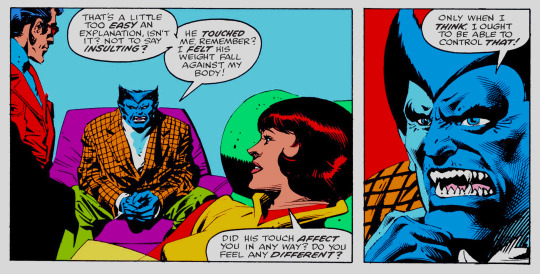
hank's made it back, and goes to talk to janet and simon about what he saw, both of whom are weirdly dismissive so i'm going to assume hank's had some weird moments while drunk before, but hank is still majorly freaked out. not important, but janet is wearing a much older costume for some reason, but whatever.
AVENGERS vol 1 #178 (1963) : "THE MARTYR PERPLEX!" written by steve gerber and drawn by carmine infantino & rudy nebres
#t: comic panel#hank mccoy#beast#wonder man#simon williams#ft: janet van dyne#ft: edwin jarvis#u: 616#e: 1970#q
8 notes
·
View notes
Text
Science-Fiction. Sorted.
Key: strikethrough means duplicate to be deleted ; bold means recommended ; I have not listened to everything.
A-C
Abbott, Edwin A - Flatland (1884)
Banks, Iain M - Use of Weapons (1990)
Bear, Greg - Eon (1985)
Bester, Alfred - The Demolished Man (1953)
Bradbury, Ray - The Martian Chronicles
Brin, David - Startide Rising (1983)
Brin, David - The Postman (1985)
Brin, David - The Uplift War (1987)
Dick, Philip K
Dick, Philip K - UBIK (1969)
Dick, Phillip K - The Three Stigmata of Palmer Eldritch 1964
Philip K Dick - VALIS - 1981
Dick, Philip K - Broken Bubble (1988)
Dick, Philip K - Do Androids Dream Of Electric Sheep (1966)
Dick, Philip K - Flow My Tears, the Policeman Said (1974)
Dick, Philip K - Interviews [ note: unsorted ]
Dick, Philip K - Mr. Spaceship (1953)
Dick, Philip K - Of Withered Apples
Dick, Philip K - Radio Free Albemuth (1976)
Dick, Philip K -The Man in the High Castle (1962)
Dick, Philip K - The Minority Report and Other Stories (2002)
Dick, Philip K - Ubik (1969)
Dick, Phillip K -A Scanner Darkly (1977)
Do Androids Dream of Electric Sheep by Philip K. Dick - BBC Radio
E-G
Effinger, George Alec - A Fire In The Sun (Budayeen 2)
Effinger, George Alec - The Exile Kiss (Budayeen 3)
Effinger, George Alec - When Gravity Fails (Budayeen 1)
Farmer, Philip Jose - To Your Scattered Bodies Go (1971)
Gibson, William [note: incomplete - have misfiled some]
Gibson, William - All Tomorrows Parties
Count Zero (1986) (96kb mp3)
Gibson, William - Idoru
Neuromancer (1984) [ note: read by the author ]
Pattern Recognition (2003)
Virtual Light
The Peripheral - William Gibson (2014)
Agency
Alien III An Audible Original Drama
H -
Haldeman, Joe - The Forever War
Hamilton, Peter F - The Reality Dysfunction (1996)
Herbert, Frank - Dune
Keyes, Daniel - Flowers for Algernon
LeGuin, Ursula - The Dispossessed - 1974
LeGuin, Ursula - The Lathe of Heaven - 1971
LeGuin, Ursula - The Left Hand Of Darkness (1969)
LeGuin, Ursula - The Left Hand of Darkness (Alt Copy)
LeGuin, Ursula - The Word For The World Is Forest (1976)
Lem, Stanislaw - Solaris (1950)
L'Engle, Madelein - A Wrinkle in Time
Lewis, CS - Out of the Silent Planet (1938)
May, Julian - The Many-Colored Land (1981)
McDevitt, Jack - Chindi
McDevitt, Jack - Engines_of_god
McDevitt, Jack - Time Travelers Never Die -2009
McDevitt, Jack - Echo- Jack McDevitt
McDevitt, Jack - Seeker
McDevitt, Jack - The Devil's Eye
McDevitt, Jack - Polaris-Jack McDevitt
McDevitt, Jack - talentforwar.m4b
McDonald, Ian - Hyberabad Days
Morgan, Richard - Altered Carbon (2002)
Niven, Larry - Ringworld - 1970
Niven & Pournelle - The Mote in God's Eye
Pohl, Frederik - Gateway
Powers, Tim - On Stranger Tides
Powers, Tim - Declare
Powers, Tim - The Anubis Gates
Powers, Tim - Three Days to Never
Reynolds, Alasdair Revelation Space - Alastair Reynolds - 2000
Robinson, Kim Stanley - Aurora.m4a
Robinson, Kim Stanley - Mars Trilogy [AudioBooks]
Robinson, Kim Stanley - New York 2140
Robinson, Kim Stanley - The Years of Rice and Salt
Robinson, Kim Stanley - Three Californias Triptych 01 - The Wild Shore [Rudnicki]
Robinson, Kim Stanley- Three Californias Triptych 02 - The Gold Coast [Rudnicki]
Robinson, Kim Stanley- Three Californias Triptych 03 - Pacific Edge [Rudnicki]
Rucker, Rudy
Rucker, Rudy - Ware 1 - Software
Rucker, Rudy - Ware 2 - Wetware
Rucker, Rudy - Ware 3 - Freeware
Rucker, Rudy - Ware 4 - Realware
Sagan, Carl - Contact
Scalzi, John - Old Man's War (2005)
Shelley, Mary - Frankenstein (1818)
Simak, Clifford - Way Station (1963)
Simmons, Dan - Hyperion
Simmons, Dan - Ilium (2003)
Smith, E E 'Doc' - Gray Lensman (1940)
Stephenson, Neal - The Diamond Age (1995)
Sterling, Bruce - Mirrorshades - The Cyberpunk Anthology
Wells, HG - The Invisible Man (1897)
Wells, HG - The War of the Worlds
Wells, Martha - Artifical condition
Willis, Connie - Doomsday Book (1992)
Wyndham, John - The Day of the Triffids (1951)
Wyndham, John - The Chrysalids
Verne, Jules - Journey to the Center of the Earth (1864)
Vinge, Vernor - A Fire Upon the Deep (1991)
0 notes
Text
The Lemp Mansion
by Troy Taylor
The Lemps came to prominence in the mid-1880s as one of the premier brewing families in the country. By the 1870s, Lemp's Western Brewery was the largest of the thirty breweries in St. Louis, with E. Anheuser Company's Bavarian Brewery (later Anheuser-Busch) coming in second. Yet today the Lemp family is largely forgotten, remembered more for the house they built than for the beer they once brewed. That house stands today as a memorial to wealth, tragedy, and suicide.
In 1977, the house was converted into a restaurant, and bed-and-breakfast accommodation followed in the year 2000. Yet the past lives on. By day, the mansion bustles with diners and employees; but at night, after the doors have been locked tight, something still walks the halls.
Are the ghosts of the spirits of the Lemp family still unable to find rest? Quite possibly, for this unusual family was as haunted as their house is purported to be today.
Boom, Bust, Death
Adam Lemp, a German master brewer from Hennen, immigrated to America in 1836, settled in Cincinnati, and moved to St. Louis in 1838. There he opened a small grocery store whose wares include his homemade vinegar and beer. Two years later, he founded a brewery that produced some of the nation's first lager. Success followed, and his son William inherited the company on Adam's death in 1862.
By the mid-1890s, what had become that William J. Lemp Brewing Company was known all over America, having been the first brewery to distribute beer coast-to-coast. Its success was echoed by the Lamp family's mansion, which would boast 33 rooms, elegant artwork, handcrafted wood decor, ornately painted ceiling, large beautiful bathrooms, and an elevator.
Over time, the family's happiness and success gave way to despair. A combination of competitor mergers, bad equipment, the growing temperance movement, and the arrival of Prohibition in 1919 proved devastating. The brewery's introduction of a nonalcoholic malt beverage called Cerva kept it hanging on for a while, but one day the employees arrived to work to find the giant plant's doors and gates locked. What had the nation's third largest brewery in its heyday was no longer in business. In 1922, the plant was auctioned off to the International shoe Company, which would operate there until it sold the complex in 1992.
The brewery's decline was paralleled by the tragic deaths of five Lemp family members over a forty-eight-year period. The first was Frederick Lemp, William Lemp, Sr.'s, favorite son and heir apparent, who died in 1901 at the age of twenty-eight from heart failure.
A sad chain of suicides, three of which occurred in the Lemp Mansion, followed Frederick's death. The first that of his still grieving father, in February 1904. William senior shot himself in the head with a .38-caliber Smith & Wesson revolver, and no suicide note was ever found.
The March 1920 suicide of daughter Elsa Lemp Wright-considered the wealthiest heiress in St. Louis-didn't occur at the mansion; but she, too, failed to leave a note. When William Lemp, Jr., (Will) and his brother Edwin arrived at her house after the suicide, Will said "That's the Lemp family for you."
Truer words were never spoken: The next suicide was Will's, in December 1922. At the time, he was at work in the Lemp mansion, which had been converted into offices. Though seemingly cheerful and full of plans for the future the week before, Will was depressed over the collapse of the brewing dynasty and had become nervous and erratic. While his staff was elsewhere in the building, he shot himself in the heart with a .38-caliber revolver. And like his father and sister, Will left no suicide note. His son William III ran into his father's office after it happened and knelt beside his father's body. "I was afraid was coming," he cried.
Will's brother Charles was the last family member to commit suicide. After moving back into the Lemp mansion in 1929, when it again became a private residence, he grew more bitter and eccentric the longer he lived. In May 1949, a servant discovered Charles dead from a bullet wound to the dead. He was the only one of the family who left a suicide note, in which he had written, "In case I am found dead, blame it on no one but me."
In the interim, William III died of a heart attack in 1943, at the age of forty-two-yet another death in a family stalked mercilessly by the Grim Reaper.
The Hauntigns Begin . . .
It didn't take long for stories of the hauntings of the newly vacant mansion to begin circulating. Shortly after Charles's suicide in 1949, a young girl and her friends managed to get in and started up the main staircase to the second floor. Just as they reached the first-floor landing, they looked up and saw a filmy apparition coming down the steps. The young girl later described it as an almost human-shaped puff of smoke.
Later, after the mansion was sold and converted to a boardinghouse, residents often complained of hearing ghostly knocks and phantom footsteps. Soon it became hard to find tenants, and the old Lemp Mansion was rarely filled. Like the surrounding neighborhood, it slowly deteriorated.
Richard "Dick" Pointer and his family purchased the mansion in 1975 and worked to turn it into a restaurant. They soon discovered they weren't alone in the house. Workers reported strange occurrences, including feelings of being watched, vanishing tools, and strange sounds. Many of the workers left the job site and never came back.
A painter who worked on the ceiling stayed overnight in the house while he completed the job. He claimed he heard horse's hooves on the cobblestones outside. The Pointers dismissed the claim until Dick Pointer later discovered a layer of cobblestones beneath the topsoil just beyond the painter's room and realized that this portion of the grounds had been a driveway to the carriage house.
Another artist, brought in to restore the painted ceiling in one of the front dining rooms, was laying on his back on the scaffolding when he felt what he believed was a "spirit moving past him." It frightened him so badly that he fled the house without his brushes and tools. Later, after the Lemp Mansion restaurant had opened for business, an elderly visitor told the staff that he had once been a driver for the Lemp family. He explained that the painting on the ceiling in the dining room had been papered over because William Lemp hated it. On hearing the story, staff members noted that the artist restoring the painting had gotten the impression that the "spirit" he encountered was angry. Had the late William made his contempt known?
. . . and Continue
During the renovations, Pointer's son Dick junior lived alone in the house. One night he was lying in bed reading when he heard a door slam in another part of the house. No one else was supposed to be there, and he was sure he had locked all the doors. Fearing that someone might have broken in, he and his dog, a large Doberman, decided to take a look around. All the doors had been locked, just as Dick junior had left them. The same thing happened again about a month later; but again, the young man found nothing.
Ever since the restaurant opened its doors, staff members and customers alike have had odd experiences. Glasses have been seen to lift off the bar and fly through the air, unexplained sounds are often heard, and people have glimpsed apparitions who appear and vanish at will. Some visitors claim that the doors lock and unlock on their own, the piano in the bar plays by itself, and voices come from nowhere.
Late on evening when Dick junior was bartending, the water in a pitcher began swirling around of its own volition. Pointer thought he was just seeing things, but the customers who were still there swore they saw it, too. Then one night in August 1981, Dick junior and an employee were startled to hear piano start playing a few notes by itself. Not only was nobody near the piano at the time, but there was no one else in the entire building.
On one morning, a waitress encountered an unusual customer. Though the restaurant hadn't opened for business, she spied a dark-haired man seated at a table in the rear dining room. Surprised, she went over to ask if he would like a cup of coffee. He simply sat there and didn't answer. She frowned and looked away for just a moment. When she looked back, the man had vanished.
Planchettes and a Séance
Not surprisingly, the Lemp Mansion has attracted ghost hunters from around the country. Guests can be entertained at the establishment's Murder Mystery Dinner Theatre and also sign up to attend the annual Halloween party.
The hauntings first gained attention after an investigation was conducted in the mansion in October 1979 by St. Louis "Haunt Hunters" Phil Goodwilling and Gordon Hoener. At the time, they taught class on ghosts at St. Louis University, so they brought their students and even a local television crew along.
The students were divided into groups of four and given writing planchettes for contacting the spirits. Like the Ouija board, the planchette is used to spell out messages from ghosts.
One of the groups asked, "Is there any unseen presence that wishes to communicate?"
"Yes," the pencil tip of the planchette scrawled on the surface.
The students asked another questions: "Will you identify yourself?"
The planchette scratched out "Charles Lemp."
After the name was revealed, the spirit added that he had taken his own life. Asked why he did this, the spirit replied in three words: "Help, death, rest." Goodwilling later noted that the students who received this message were the most skeptical in his class. He also noted that no one in the room that night, with the exception of Dick Pointer, had any idea that Charles Lemp had committed suicide; the history of the house had yet to be widely publicized.
In November, the Haunt Hunters returned to the house, bringing along a camera crew from the television show Real People. Goodwilling and Hoener participated in a séance with two other people, neither of whom had any idea about the part history of the mansion.
Once they made contact with the spirit who identified himself as Charles Lemp, they asked why he had committed suicide. Among the words that could be made out in his reply were ". . . damn Roosevelt." Apparently, the Lemps had been less than fond of the politics of FDR.
The séance continued with the next question from the group: "Is there a message for someone in this house?"
The answer came: "Yes, yes. Edwin, money."
Goodwilling felt that if the spirit was indeed Charles Lemp, he probably became active because of the remodeling in the 1970s or perhaps because he had something to tell his brother Edwin. During the séance, Charles may have believed that Edwin was still alive and was trying to pass along a message about money. Could this be what caused Charles's ghost to remain behind? Could there be a secret treasure hidden somewhere in the house? If so, it has yet to be found.
The Lemp Mansion Today
Is the Lemp Mansion still haunted? Most visitors, especially the ghost hunters, will tell you that it is. One of the owners, Paul Pointer, considers the ghosts are just another part of the mansion's ambience. "People come here expecting to experience weird things," he said, "and fortunately for us, they're rarely disappointed."
Paul sometimes tells visitors of his own observations and eerie encounters, but he prefers to let them experience the hauntings on their own. Many guests have reported feeling ghostly cold chills, seeing moving objects, and hearing creaking footsteps. Just as many have taken bizarre photographs in the house-photos with images that seem to have no explanation. Given the evidence, it seems that the once triumphant but ultimately defeated Lemps-or some of them, at least-just can't bear to leave their family home.
0 notes
Text
8 gennaio … ricordiamo …
8 gennaio … ricordiamo …
#semprevivineiricordi #nomidaricordare #personaggiimportanti #perfettamentechic
2023: Bob Marchese, attore italiano. Attore prevalentemente teatrale, fu uno dei fondatori del Gruppo della Rocca. Apparve sugli schermi cinematografici nel film Il divo. Era padre dell’attore e doppiatore Paolo Marchese, e vedovo dell’attrice Wilma D’Eusebio. (n.1937)
2021: Alberto Terrani, pseudonimo di Alfredo Bolognesi, attore italiano. (n. 1935)
2021: Ed Bruce, William Edwin Bruce,…

View On WordPress
#8 gennaio#8 gennaio morti#Alberto Terrani#Alfredo Bolognesi#Bob Marchese#Ed Bruce#Edd Byrnes#Edward Breitenberger#Gale Page#Giorgio Listuzzi#Margaret Yvonne Middleton#Morti 8 gennaio#Morti oggi#Piero De Bernardi#Ricordando ..#Ricordiamo#Ricordo di te#Sally Perkins Rutter#Teodosio Losito#William Edwin Bruce#Yvonne De Carlo
0 notes